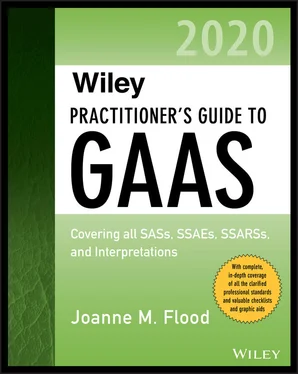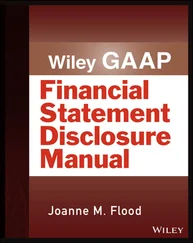Evaluating the Sufficiency and Appropriateness of the Audit Evidence Obtained
The auditor must form a conclusion as to whether sufficient appropriate audit evidence has been obtained to reduce to an appropriately low level the risk of material misstatements in the financial statements. (AU-C 330.27 and .28) The auditor’s judgment as to what constitutes sufficient appropriate audit evidence is influenced by factors such as the following:
Significance of the potential misstatement in the relevant assertion and the likelihood of its having a material effect, individually or aggregated with other potential misstatements, on the financial statements
Effectiveness of management’s responses and controls to address the risks
Experience gained during previous audits with respect to similar potential misstatements
Results of audit procedures performed, including whether such audit procedures identified specific instances of fraud or error
Source and reliability of available information
Persuasiveness of the audit evidence
Understanding of the entity and its environment, including its internal control
(AU-C 330.A75)
If the auditor concludes that he or she has not obtained sufficient evidence, the auditor:
Attempts to obtain such evidence.
Expresses a qualified opinion or disclaims an opinion if unable to obtain that evidence.
(AU-C 330.29)
The auditor should document the following:
The overall responses to address the assessed risks of misstatement at the financial statement level
The nature, timing, and extent of further audit procedures
The linkage of those procedures with the assessed risks at the relevant assertion level
The results of the audit procedures
The conclusions reached with regard to the use in the current audit of audit evidence about the operating effectiveness of controls that was obtained in a prior audit
Basis for not using external confirmations
Agreement of financial statements with underlying accounting records
(AU-C 330.30–.33)
Testing at Interim Dates
Convenience-Timed Tests
Some audit tests can be applied at any convenient selected date before the balance sheet date and completed as part of year-end procedures. Examples are:
Tests of details of the additions to, and reduction of, accounts such as property, investments, debt, and equity
Tests of details of transactions affecting income and expense accounts
Tests of accounts that are not generally audited by testing the details of items composing the balance sheet, such as warranty reserves and certain deferred charges
Analytical procedures applied to income or expense accounts
The common denominator in these tests is that the nature and extent of procedures applied are not necessarily influenced by doing a portion of the testing before the balance sheet date. For example, the auditor may decide to vouch all property additions and retirements over a specified dollar amount. The nature and extent of the test are not influenced by whether the testing is done all at year-end or one portion is done at an interim date and the remainder at year-end.
Misstatements Detected at Interim Dates
If the auditor confirms accounts receivable as of October 31 and discovers an error in the receivables balance, how should that misstatement be handled, given that the opinion is on the balance sheet as of December 31, not October 31?
As a practical matter, the auditor should evaluate the results of interim testing to assess the possibility of misstatement at the balance sheet date. This evaluation is influenced by:
The potential implications of the nature and cause of the misstatements detected at the interim date
The possible relationship to other phases of the audit; for example, do the misstatements detected indicate a need to reconsider the assessment of control risk?
Corrections that the entity subsequently records
The results of auditing procedures that cover the remaining period
This assessment may cause the auditor to reperform principal substantive tests at year-end or to otherwise expand the scope of substantive tests at year-end. (AU-C 330.A64)
NOTE: Even if the misstatement detected at an interim date is corrected prior to year-end, there may be implications for evaluation of misstatements at year-end. Unless the auditor has applied procedures sufficient to provide reasonable assurance that similar misstatements have not occurred, the auditor may need to project a misstatement from interim to year-end.
Considering Control Risk When Testing at an Interim Date
When performing principal substantive tests at an interim date, the primary control focus is on asset safeguarding and controls that address the completeness assertion. If the design of these controls is not effective, then the substantive tests related to existence and completeness assertions should be applied at year-end.
Keep in mind that this consideration is tied to specific assertions, not to the overall account. For example, confirmation of receivables does not address the completeness assertion, which means that receivables could be confirmed at an interim date even if controls to address completeness were not effectively designed. However, the auditor would still need to consider the nature, timing, and extent of further audit procedures related to the completeness assertion.
Length of Remaining Period
How long can the remaining period be? Section 330 offers only the general observation that the potential for increased audit risk tends to become greater as the remaining period becomes longer.
In practice, many auditors believe the remaining period should not exceed three months (i.e., for a December 31 audit, testing certain balances as of September 30). Another rule of thumb is to consider a remaining period of one month as creating a relatively low increase in audit risk. Ordinarily, if the remaining period is one month, substantive tests to cover the remaining period can be restricted to tests such as:
Comparison of the account balance at year-end with the balance at the interim date to identify unusual amounts or relationships.
Investigation of unusual amounts or relationships.
Application of other analytical procedures to the year-end balance.
Naturally, as with any rule of thumb, the auditor should be aware that in specific circumstances, factors may increase audit risk, and the principal substantive tests will have to be applied at year-end.
Designing Audit Procedures
There is an almost infinite variety of approaches that an auditor can use in practice to achieve the objectives of AU-C 330. The following chart shows some examples of further audit procedures that may be performed to meet certain audit objectives.
| Illustrative assertions about account balances |
Examples of substantive procedures |
| Existence or Occurrence |
| Inventories included in the balance sheet physically exist. |
Observing physical inventory counts. Obtaining confirmation of inventories at locations outside the entity. Testing of inventory transactions between a preliminary physical inventory date and the balance sheet date. |
| Inventories represent items held for sale or use in the normal course of business. |
Reviewing perpetual inventory records, production records, and purchasing records for indication of current activity. Comparing inventories with a current sales catalog and subsequent sales and delivery reports. Using the work of specialists to corroborate the nature of specialized products. |
| Completeness |
| Inventory quantities include all products, materials, and supplies on hand. |
Observing physical inventory counts. Analytically comparing the relationship of inventory balances to recent purchasing, production, and sales activities. Testing shipping and receiving cutoff procedures. Obtaining confirmation of inventories at locations outside the entity. |
| Inventory quantities include all products, materials, and supplies owned by the entity that are in transit or stored at outside locations. |
Analytically comparing the relationship of inventory balances to recent purchasing, production, and sales activities. Testing shipping and receiving cutoff procedures. |
| Inventory listings are accurately compiled and the totals are properly included in the inventory accounts. |
Tracing test counts recorded during the physical inventory observation to the inventory listing. Accounting for all inventory tags and count sheets used in recording the physical inventory counts. Testing the clerical accuracy of inventory listing. Reconciling physical counts with perpetual records and general ledger balances and investigating significant fluctuations. |
| Rights and Obligations |
| The entity has legal title or similar rights of ownership to the inventories. |
Observing physical inventory counts. Obtaining confirmation of inventories at locations outside the entity. Examining paid vendors’ invoices, consignment agreements, and contracts. |
| Inventories exclude items billed to customers or owned by others. |
Examining paid vendors’ invoices, consignment agreements, and contracts. Testing shipping and receiving cutoff procedures. |
| Valuation or Allocation |
| Inventories are properly stated at cost (except when market value is lower). |
Examining paid vendors’ invoices. Reviewing direct labor rates. Testing the computation of standard overhead rates. Examining analyses of purchasing and manufacturing standard cost variances. |
| Existence or Occurrence |
| Slow-moving, excess, defective, and obsolete items included in inventories are properly identified. |
Examining an analysis of inventory turnover. Reviewing industry experience and trends. Analytically comparing the relationship of inventory balances to anticipated sales volume. Touring the plant. Inquiring of production and sales personnel concerning possible excess of obsolete inventory items. |
| Inventories are reduced, when appropriate, to replacement cost or net realizable value. |
Obtaining current market value quotations. Reviewing current production costs. Examining sales after year-end and open purchase order commitments. |
| Presentation and Disclosure |
| Inventories are properly classified in the balance sheet as current assets. |
Reviewing drafts of the financial statements. |
| The major categories of inventories and their bases of valuation are adequately disclosed in the financial statements. |
Reviewing drafts of the financial statements. Comparing the disclosures made in the financial statements to the requirements of generally accepted accounting principles. |
| The pledge or assignment of any inventories is appropriately disclosed. |
Obtaining confirmation of inventories pledged under loan agreements. |
This approach can be time-consuming and result in a substantial amount of repetition. For example, developing specific audit objectives for the existence of each asset normally results in the repetitive statement that the particular asset does, in fact, exist and is available for its intended use. There is more variation for specific audit objectives related to presentation and disclosure, but disclosure checklists are available for that assertion and related specific objectives.
Читать дальше












